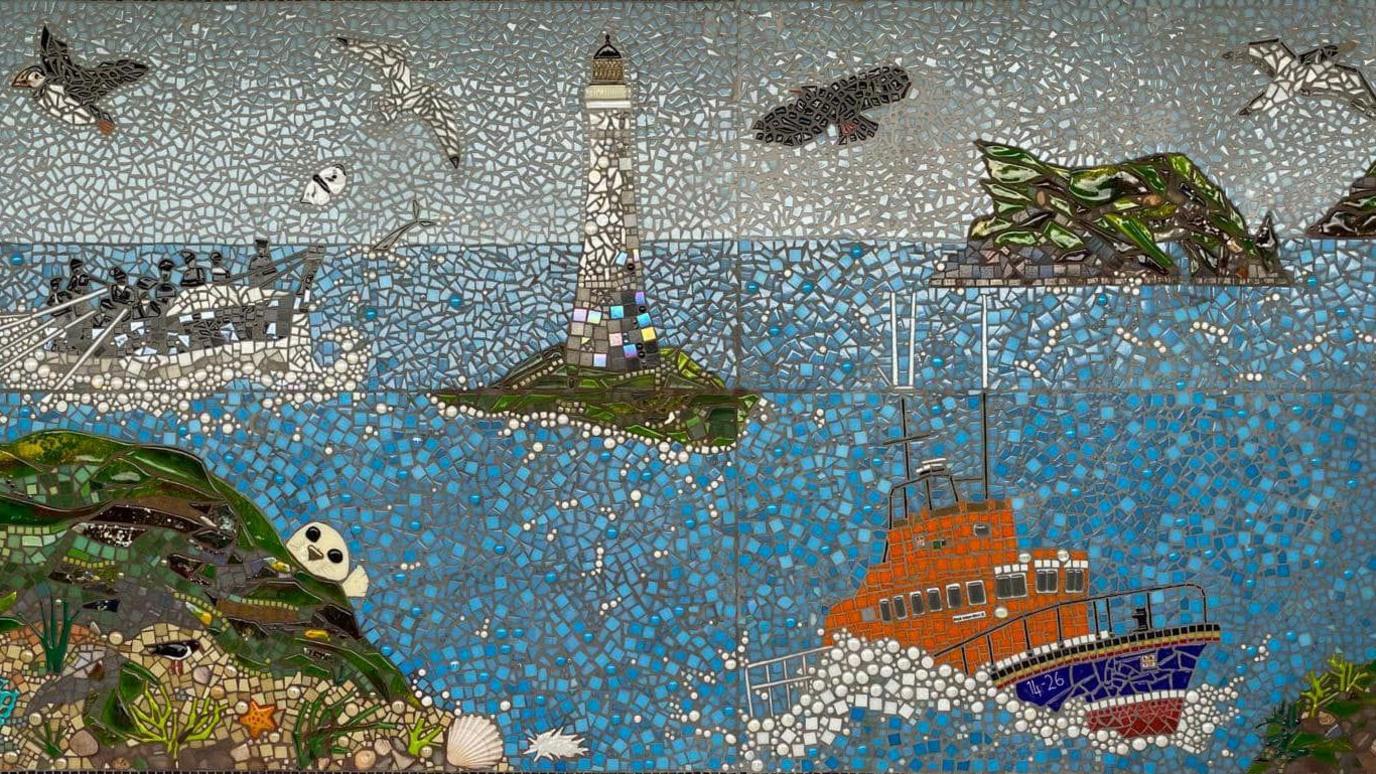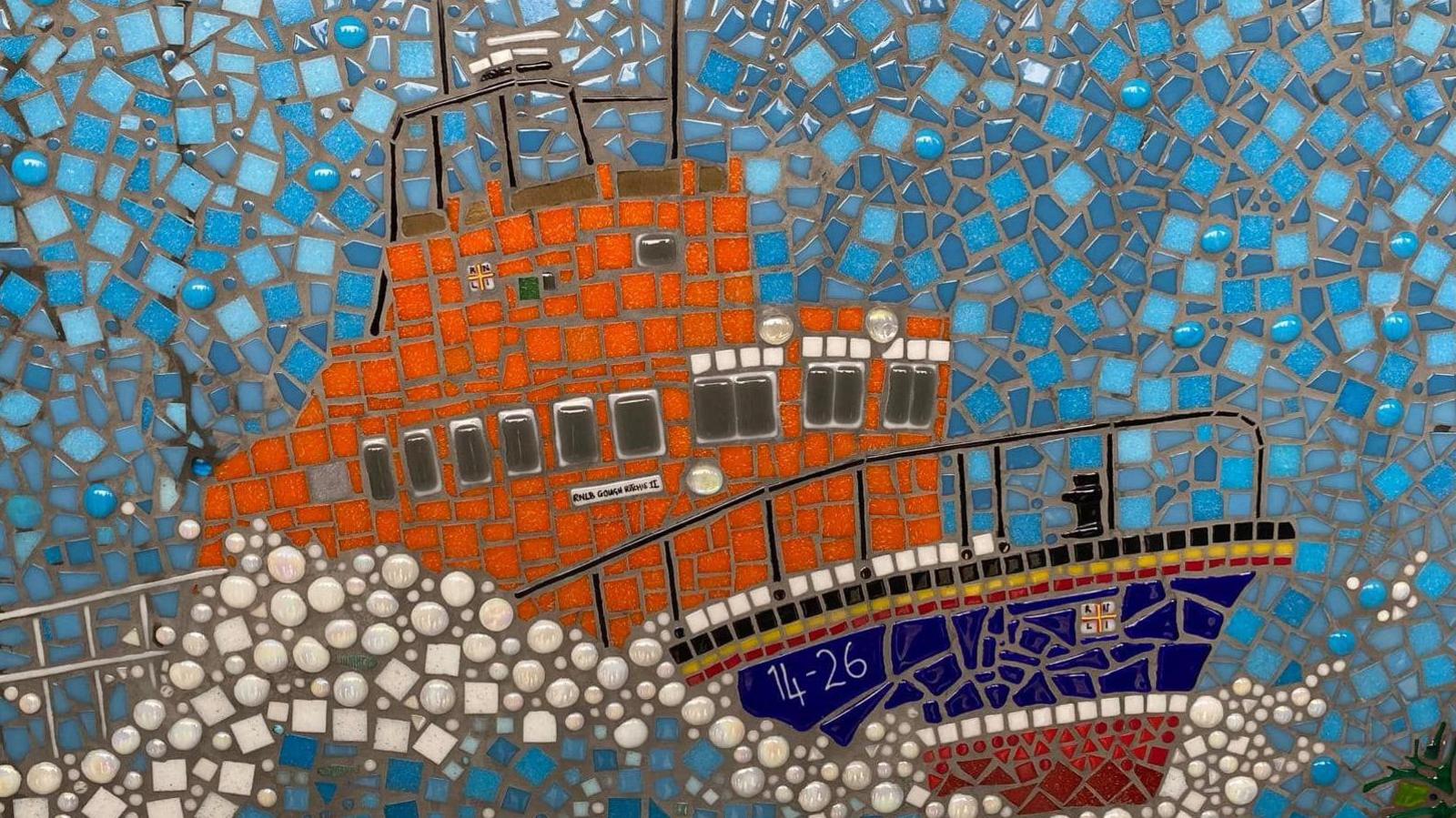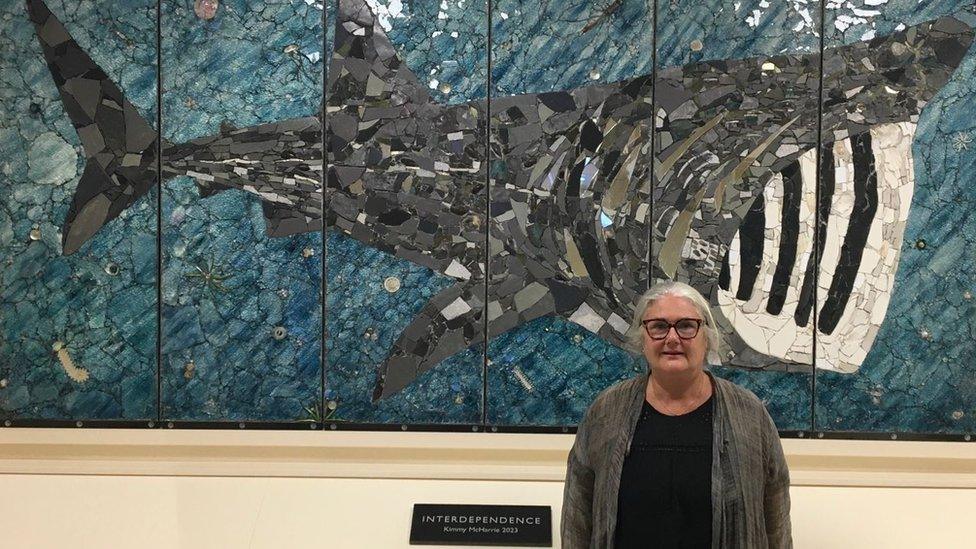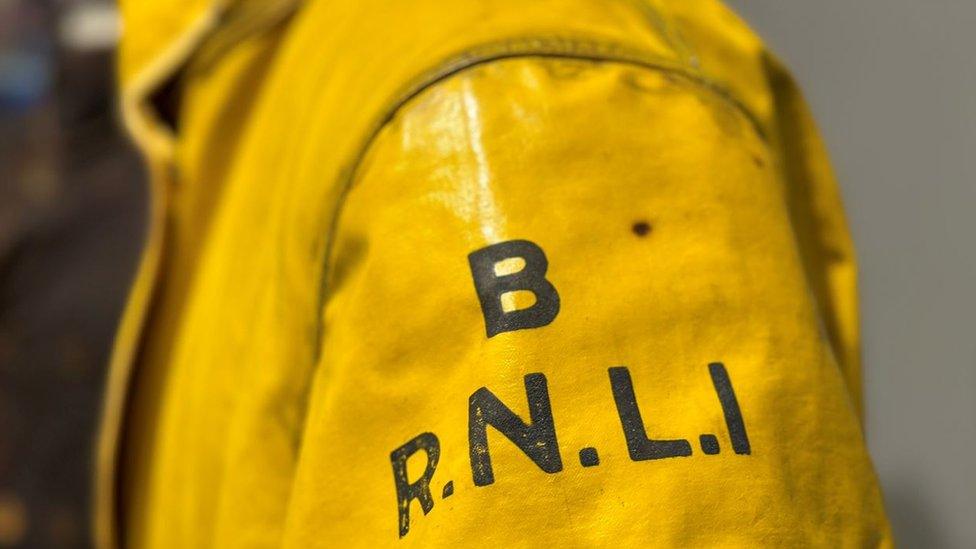Marine mosaic celebrates southern RNLI history

The artwork reflects the history of the lifeboat in Port St Mary
- Published
A new mosaic celebrating the history of the lifeboat in the south of the Isle of Man has been unveiled to mark the 200th anniversary of the RNLI.
The nautical-themed artwork is located in a seaside shelter at Happy Valley in the village of Port St Mary.
Artist Debra Tracey chose to make the feature into a community project, with 200 volunteers from schools and 13 local organisations applying the pieces.
Port St Mary RNLI said that it was "a very fitting tribute to the 200th anniversary of the founding of the institution".

Port St Mary's Trent-class lifeboat Gough Ritchie II is a feature of the mosaic
Ms Tracey said she was "really thrilled" to see the artwork ceremonially unveiled by Lieutenant Governor Sir John Lorimer.
Describing the concept of the project, she said: "What I’d like the artwork to do is to educate, raise awareness and hopefully more money for the RNLI, because this anniversary is a really significant milestone for such an essential and incredible charity."

The piece also features the original wooden Port St Mary lifeboat
The features on the mosaic, which include the station’s modern Trent-class lifeboat Gough Ritchie II and the station’s original wooden lifeboat from the 1800s the James Stevens No 1, were chosen in consultation with the Port St Mary RNLI volunteers.
Local landmarks, such as Chicken Rock Lighthouse and a coastal rock formation known as the the Drinking Dragon.
Ms Tracey said she had used "a lot of kiln-formed glass elements to make it a bit more interesting", and had also used the kiln to give the tiles smooth edges to make them safe for children to handle.
Why not follow BBC Isle of Man on Facebook, external and X, external? You can also send story ideas to IsleofMan@bbc.co.uk
Related topics
More like this
- Published14 August 2023

- Published4 March 2024

- Published3 March 2024
